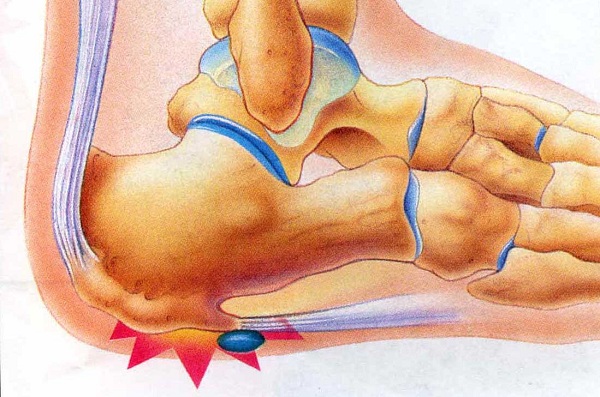Gypsum removal is always a joyous event for a patient who broke a leg. It would seem that it marks the end of seclusion and life with limited mobility, the ability to move around the house again and go out without any problems, walk without crutches and visit any places without having to call a taxi. In practice, the situation is somewhat more complicated: the limb will still need to be developed.
A leg that has been immobilized for several weeks becomes less efficient than before. Fixation in gypsum, without muscular contractions, causes a slowdown in blood flow and oxygen starvation of tissues. Their cells atrophy to a certain extent, and immediately after the completion of immobilization the leg turns out to be disobedient, “heavy”, helpless. It is possible that in the first minutes after trying again to walk “on your own two,” you will even feel a little dizzy. However, a full recovery is not far off, and with proper care and efforts, you will soon be able to develop an injured leg, returning all its functions.
The main components of the rehabilitation period
In order to develop a foot after the removal of the gypsum, it is important to pay attention to all the components of the treatment that the doctor prescribes. It usually includes:
- Physical Therapy. This is the basis of rehabilitation after a fracture, for which laziness is unacceptable. The first two or three weeks you will have to practice several times a day to effectively develop your leg. If you do not do this, then miss the short period during which the regenerated tissue is most capable of stretching and contracting. Properly working out a limb a month after removing the plaster will be much more difficult than in the first weeks after that.
- Physiotherapy. This may be a massage, heating, electrophoresis, ultrasound procedures – depending on the nature of the fracture. It is extremely important to follow the recommendations of the doctor, because, for example, warming is effective for some fractures, while for others (such as knee injuries), on the contrary, they can worsen the mobility of the developed area. Massaging the leg after the gypsum at home, without proper medical knowledge about the specifics of working with limbs after immobilization, is not worth it. In almost all cases, it is useful to take a bath with sea salt, medicinal herbs and other useful additives to “soften” the muscles and make them more elastic (after this, it is desirable to develop a heated and “softened” area of physical therapy).
- Medication. Most often we are talking about vitamin complexes rich in calcium, although in some cases doctors prescribe specific drugs based on the condition of a particular patient. In addition, the doctor may advise you to smear a therapeutic gel (anesthetic, anti-inflammatory, warming, etc. – depending on the situation).
- Special diet. Again, it should contain enough calcium, protein, vitamins and other trace elements that are beneficial for bones, joints, cartilage, and muscles, and will contribute to their speedy recovery. After removing the plaster, it is worth eating fruits and vegetables, meat, fish, cottage cheese, aspic, or jelly (products containing gelatin have a particularly good effect on the condition of cartilage and joints).
The main tasks of the exercises
A set of exercises that contribute to the development of the leg after the removal of the plaster can be selected by your physician, physiotherapy specialist, or you can find it yourself on the Internet (including on popular video hosting sites). The main thing is that each lesson includes the following tasks:
- Warm up within 2-3 minutes before starting the exercise, you must knead the injured area along the muscles. It will be especially good if you are able to find the location of the seal that formed next to the fracture, and will need it as well (with some pressure, to light pain sensations).
- Stretching. This is the main problem that needs to be developed after removing the plaster from the leg: a muscle that has been accustomed to being in a stationary state does not demonstrate the degree of mobility and stretching that was before the injury. The simplest stretching exercises are flexion and extension of the limb, performed with effort, too painful sensations. In this context, it is very important that every day you can perform actions with a slightly larger amplitude than before (at least a few degrees) until you have fully developed the functions.
- Twisting. In fact, it is also stretching, but somewhat more specific. Twisting exercises are especially important when it comes to developing legs after a knee or ankle injury. The rotation of the foot, shin, and whole limb also allow you to restore the former amplitude of movements.
- Relaxation. In order to develop a leg after a cast is removed, it is necessary to perform all groups of exercises at the maximum of capabilities (as already mentioned, to tolerable pain), but this does not mean that it is necessary to feel pain all the time. Each action is performed by approaches: 8-10 seconds of work with effort, 5-6 seconds of relaxation.
It is advisable to perform a set of exercises three or four times a day, several approaches. This may seem tedious, but it is very important for successful rehabilitation. The sensitive period for recovery of functions of the injured leg is rather short, and you should have time to make a maximum during it. If you have an exercise bike or any other sports equipment, you can add it to your daily practice exercises on them (by consulting your doctor).
Swelling of the legs after removing the plaster – is this normal?
At first, after the release of the leg from the plaster, it swells strongly enough. This is a natural consequence of the fact that she spent a long time in an immobilized state, and the excess liquid “stagnated” in it. Sometimes the damaged area, in addition to this, is quite painful. If the leg after the removal of gypsum is swollen, you should follow the recommendations of the doctor, but usually, they are about the same as those given above. Rub a limb with a warming ointment, perform massage and physiotherapy, develop a leg physical therapy – in a word, apply all possible efforts to normalize blood circulation in it, improve muscle tone and eliminate congestion.
We hope that now you have a fairly clear idea of what to do with your foot after removing the plaster. Qualitatively and diligently develop a previously injured limb in order to return to it 100% of former opportunities – a task that will require time and effort from you, but the results will be worth it. Take care of your health, and soon you will forget about the turn as if it never existed!









